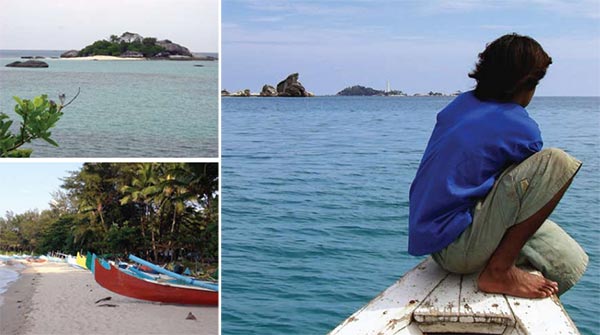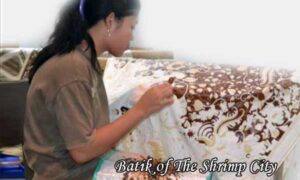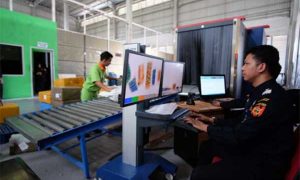
Some Indonesian islands, such as Bali and Java, are household names the world over; others, like the Moluccan spice islands, were once well known but have since lost their economic importance and faded into obscurity.
The island of Belitung lies somewhere in between: of considerable economic importance in the nineteenth century thanks to its large-scale tin mining, Belitung’s name still endures today in the name of the largest multi-national mining company in the world, namely BHP Billiton. But despite this claim to fame, BHP Billiton’s connections with Belitung have long since ceased and the island has once again become a quiet half-forgotten backwater – or at least until very recently.
Not dissimilar in size to Bali, Belitung lies in the Java Sea about midway between South Sumatra and West Kalimantan in Borneo. The island had a somewhat shadowy existence until the mid-nineteenth century, isolated by poor navigational charts and the danger of pirates. During the Napoleonic Wars, the British took control of Dutch colonial possessions in the Indies. At this time Raffles is said to have considered using Belitung as a British port instead of Singapore, plans that never materialized as Dutch possessions where returned by the British in 1820.
The island’s fortunes changed when the Dutch discovered large deposits of tin and established a private mining company in 1850, called Billiton Maatschappij (Billiton being the Dutch pronunciation for Belitung). The arrival of the company led to the transformation of the ethnic composition of the island as the Dutch, having no interest in hiring locals, imported thousands of Chinese labourers from mainland China through first Singapore, and later Hong Kong. The company even engaged in a bizarre experiment in the 1860s to import Javanese women to “marry” Chinese coolies and create a settled population that could supply the company with labour. In the early 1920s, the number of Chinese mineworkers peaked at over twenty thousand, while the total Chinese population on
Belitung was almost thirty thousand, accounting for over twofifths of the total population of the island. With the Dutch acceptance of Indonesia’s independence in 1949, control of the company passed to the Indonesian government. Full ownership of the mine finally passed to the Indonesian government after its nationalization in 1958 along with other Dutch assets following a dispute over the then Dutchcontrolled West Irian. In the 1990s, faced with the collapse of the price of tin, the mine’s owner, Indonesian state-owned company, PT Tambang Timah, decided to cease operations.
Following Indonesian independence, many of the original Chinese mineworkers preferred to remain in Belitung after 1949 and took Indonesian citizenship, tin, and today there are major efforts to diversify the economy into sand (quartz) mining, kaolin, ceramics, palm oil, pepper and timber. In the past few years tourism has started to gain in importance too.
Belitung an Undiscovered Island Gem
What is starting to change the character and the economy of Belitung is the fact that the island is now connected by daily flights from Jakarta. Flights take a mere 50 minutes to fly from Jakarta’s international airport to a small airport just outside the island’s capital, Tanjung Pandan, on the west coast. This has opened up the possibility of larger-scale tourism and word is spreading that, despite its relative lack of development, Belitung is one of the most beautiful islands in Indonesia.
Belitung actually consists and today some 12 percent of the island’s population is of ethnicChinese descent. Many of them set themselves up as traders and small businessmen and the ethnic-Chinese are now important players in the local economy. Despite the depressed price of tin on world markets in recent years, tin mining continues to be important to the local economy. But Belitung is no longer beholden to of the main island and almost two hundred smaller islands surrounding it.
Some of the beaches both on Belitung itself and many of the small surrounding islands are absolutely stunning, with coconut-fringed beaches, pristine white powdery sand and a clear idyllic turquoise sea — all without any of the crowds found on beaches elsewhere in Asia. Belitung is also blessed with the most curious and distinctive granite rock formations along much of its coastline, adding to the island’s very unique character.
One of Belitung’s most picturesque small islands off the northwest coast is Lengkuas Island. A short half hour boat ride with a local fisherman from Tanjung Kelayang Beach, the trip passes many of the strangely shaped rock formations on the way, including Burung Island, named because of the resemblance of its rock formation to the head of a bird (burung).
Lengkuas Island is the site of a lighthouse made of iron cast in England in the 1880s and shipped by the Dutch to Indonesia and assembled in 1889. The entire lighthouse is constructed of curved cast iron sections individually numbered such that they could be assembled in the correct order and bolted together. The lighthouse still functions as an aid to navigation and is maintained by a resident lighthouse keeper, who spends a stint of three months on the island before being replaced.
The climb to the top may leave you a little short of breath; but once you reach the highest platform and walk out onto the narrow viewing balcony that surrounds the main navigational light, the views of the granite rocks, pure white sand and clear turquoise sea below will offer you a glimpse of paradise.
Despite being the island’s largest town, Tanjung Pandan is a tidy, laid back place, where traffic jams as still unheard of and most buildings are no higher than two storeys. Dutch-era shop-houses and old colonial buildings are still visible and well maintained. The town has a small port cluttered with traditional Bugis fishing boats and fishing platforms, and an interesting fish market. Tanjung Pandan is also the easiest place in which to find accommodation, although most of the hotels are small rather modest establishments. The grandest hotel in the town is Hotel Billiton, a recently renovated Dutch-era building.
Belitung an Undiscovered Island Gem –Temporaktif






